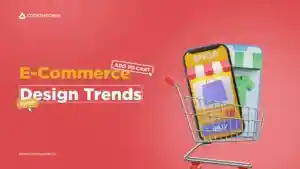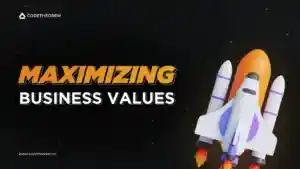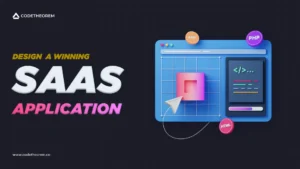In this era of digital, technology evolves and transforms every industry. That is possible by bringing a digital dimension to every business. What was not possible, then challenging, was later done via word of mouth and telephonic order. And now, it is possible through a few taps. Apps have got everything right at your fingertips. The same is the case with the food delivery app!
Food delivery applications have become a necessity now. They have made savouring mouth-watering delicacies from the comfort of your home. Moreover, according to statistics, the revenue of the food industry is expected to grow. That, too, is at a compound annual growth rate of 15.4% from 2019 to 2025.
Thus, if you plan to create a good delivery app, this blog is for you. It will walk you through everything there is to know about developing a good delivery app.
Article content
How do Food Delivery Apps Work?
Before we get to the food delivery app development process, let’s understand how it works.
At the outset, food delivery applications are pretty easy to use. Moreover, they give complete control to the customers over their choices. And what’s interesting is that these applications have a vast database. For selecting the restaurant and ordering the food. Thus, here’s an overview of how food-ordering apps work.
Step 1: Recommending Dishes & Restaurants
Customers get recommendations for restaurants nearby to their current locations. From selecting the restaurant to checkout and payment, the consumer has control. Moreover, they know how to add their desired items to the food cart.
Step 2: Placing Order
Once the customer has added the selected dishes to the cart, they can review the order. Once they’re satisfied, they can move ahead to adding their delivery address. Thus, you need to give them the option to check their address and personal details. It is an important step before they make the payment.
Step 3. Order confirmation by Restaurant
The restaurant is notified as soon as the order is placed. Furthermore, the restaurant takes up to 5 minutes to confirm the order. Once approved, they start preparing the food.
Step 4. Out for delivery
Once the food is packed and ready to be picked up by the delivery partner, customers get a notification. (Note: when you plan to build a food delivery app, ensure to work on how the customers can connect to the restaurant and the delivery partners.)
Step 5. Order Tracking
Customers receive the order details and the details of the delivery partner. This is what makes it easy to track the order. Moreover, customers can also reach out to the delivery agent in case of delays.
Step 6. Food Order Delivered
The delivery partner drops the parcel at the given address. The customers can then enjoy their food at home.
Thus, everything has to run with minimal interruptions. It should be easy to connect to the restaurant. In addition, the geolocation and information to communicate with the delivery partner must be accurate. The process has to be smooth. Moreover, there should not be errors with payment gateways.
Types of food delivery app models
Now, there are two types of food delivery app models that you can choose from.
1. Order-Only Application
In this food delivery application model, your application will only accept orders. Then, forward them to the respective merchants. Furthermore, the merchant handles arranging transportation and delivery of the food items.
Through this model, you can earn by charging a commission on the total order value. Hence, it can range between 10% to 30%. In addition, you must note that you will find a lot of competition in this segment. The implementation costs are low. For that reason, many companies start with a single solution. Thus, as they grow, it is easier for them to scale and cover the other side of the market.
2. Order and Delivery Application
An order and delivery food app model allows customers to order and arrange delivery. In this case, you will have to create a food ordering app and learn how to add a delivery service. As a result, your company will be responsible for delivering the food to customers.
Moreover, this model generates revenue from commission and delivery charges. Thus, the commissions are also higher. Nonetheless, the delivery charges depend on the company structure. Either you can choose to keep it a base fee or charge it according to the distance. In addition, note that the initial cost will be huge. Why? Because you will have to take care of everything, from training to delivery. Even so, the sky’s the limit if your infrastructure is good.
How to Build a Food Delivery App?
If you want to know how to create a food delivery app, this section will walk you through all the steps. To build a food delivery app, you must first understand how to manage the back-end development. Next comes the front-end development. Furthermore, you must figure out how to leverage the digital ecosystem. This will help you connect to all the solutions. Moreover, here are a few steps you must consider when working on food app development.
Step 1: Idea Finalization
The first step is to confirm your food delivery app idea. Check whether it is good enough and has all the solutions people want. Moreover, talk to a few potential customers about the same and see what they say.
Step 2: Market Trends
It’s essential to stay updated with market trends. Keep adding new features from time to time. As a result, the users will be drawn toward your application. If you don’t provide popular features, your clients may lose interest in your application.
Step 3: Target Market Research
Next comes target market research. To please your target market, you need to identify their needs. But first, you need to know who your target audience is. Moreover, for starters, you can compile a demographic profile of the audience. It can emphasize age, gender, country, and wealth. After that, you can narrow it down and analyze each of the different groups. Subsequently, you can figure out which ones to cater to.
Step 4 Food App Delivery Design
You can now move on to creating mockups, wireframes, UX design, and UI design. Since all these come under UI UX Designing, the extra tasks include:
- Developing user interface
- Creating usability sequences
- Designing the UI design elements such as image placements and creating buttons and screens.
Step 5: Food Delivery App Development
When it comes to a food delivery app today, the technologies you use matter extensively. You must implement various functionalities in the app today. Thus, you will need to integrate your application with various APIs and payment gateways.
You’ll also have to use a technology that points to the customer’s exact location. Hence, technologies like Google Maps, Google Places API, and the Core Location Framework are good options. In addition, you could use technologies to add push notifications and cloud messaging.
Next comes understanding the tech stack. Here the app developers need to:
- Develop the database
- Look after the logistics control
- Manage the Data
- Take care of authentication and API integrations
- Manage the 3rd party setup
Features of a Great Food Delivery App
Now, we can divide this section into 4 parts based of
There are four major players in the food delivery business and they are restaurant owners, users, delivery partners & food aggregators. The features can be divided into 4 sections based on their individual needs.
- Restaurant App
- User App
- Delivery App
- Admin App
1. Features of Restaurant App
- Easy Registration and Authentication – Allow the workers to check incoming and completed orders.
- Menu Management – Allow the restaurants to update their menus on your food delivery app in real-time.
- Order Management – Allow restaurant management to easily update the order status on your app for food delivery.
- Reviews – Allow restaurant owners to check customer reviews and feedback.
2. Features of User App
1. Smartwatch Integrations
This feature in food delivery apps helps enhance the app’s user experience. Since it will be available on various devices, users will have flexibility. Moreover, users could also track or cancel an order from the wrist.
2. Geotargeting
Restaurants can enable a setting that highlights their menu items. Especially for the areas where they can instantly deliver. Ergo, the customers who live in those neighbourhoods will have higher chances of getting orders. In addition, you can combine this feature with automated offers and coupons. This ensures more significant engagements and orders from your food delivery app users.
3. Different Payment Options
Never let your customers struggle to pay. You must give them more than one option to make a payment. Moreover, provide them the flexibility to pay for delivery. It could be through cash, UPI, and other wallets.
3. Features of the Delivery App
- User Profile Creation
- Push notifications and alerts
- Scheduling multiple deliveries
- Google Maps Integration
- Call & chat feature
4. Features of Admin for Food Delivery App
- Admin panel – order request and cancellation feature
- Payment and commission administration
- Real-time menu updates
- Latest offers/coupon updates and code generation
- Chat and call requests with customers
Tech Stacks for Food Delivery App Development
Here’s a list of tech stacks you can use to manage the UX design and user experience during food delivery app development.
Back-End Development for Food Delivery App
| Server |
|
| Programming Languages |
|
| Framework |
|
| Database |
|
| Web Server Software |
|
| Caching Tool |
|
Front-end Development for Food Delivery App
| Programming Languages |
|
| Markup Languages |
|
| Frameworks |
|
| Processors |
|
| Payment Gateways |
|
| User Location |
|
| Direction Finding |
|
| Registrations |
|
| Storage |
|
| Analytics |
|
| Push Notifications |
|
How Much Food Delivery App Development Will Cost?
How much will food delivery app development cost you totally depends on
- Number of features you include
- Implementation difficulty level
- Number of integrations and platforms
- Technologies used
- The final tech stack
Besides, a food delivery app development takes over 60 hours? Moreover, the food delivery app coding would take up to 65 hours. This includes constructing the back end. Also, 120+ hours for the development of each platform. Hence, to give you a fair idea of the food delivery app development cost here’s a general estimate:
| Type | Hours (Approx) | Cost (Approx) |
|---|---|---|
| User App for IOS and Android | 1,200 hours | $60,000 |
| Courier App for IOS and Android | 900 hours | $46,000 |
| Web-Based Admin Panel | 257 hours | $13,000 |
| Web-Based Solution for restaurants | 180 hours | $9,000 |
Top Five Food Delivery Apps Examples
1. Uber Eats
Uber Eats is an online food delivery app. It operates in several countries like the US, India, Mexico, Brazil, and Japan. Also, its prominent features are cashless delivery and fast delivery. Besides, it enables users to order from local food chains or restaurants. Recently, this famous food delivery brand acquired Ando. It operates a few kitchens around Manhattan that deliver only the lunch menu. Thus, this app is available for both IOS and Android.
2. Grubhub
Grubhub has over 30,000 restaurants on its food delivery app. It is one of the best apps that offers hassle-free food delivery services. Also, it never fails to satisfy customers’ cravings for delicious food. Furthermore, Grubhub has offices in Chicago, London, and New York. This app is available for Android and iOS.
3. Postmates
Postmates is a versatile online food delivery application. It is available in 90+ cities across the USA. Also, it has some uncommon features, like food valet. This is what gives Postmates a unique identity. Moreover, this app is not limited to delivering food only. But it also offers pick-up and delivery of groceries and drinks.
4. DoorDash
DoorDash has become the largest food delivery company in the United States. Why? It allows users to find local food chains and grocery stores seamlessly. DoorDash has more than 3,00,000 local and national food brands incorporated within the app. That too, across Canada, Australia, and the US.
5. Zomato
Zomato is a top-rated food delivery service app. This one operates in top cities across the globe. Moreover, Zomato serves 24+ nations, including India, Australia, and the USA. Also, it is one of the fastest food delivery apps that brings all the modern app features. Zomato is available for both Android and iOS.
Conclusion
Now that you’re through the food delivery app development guide, we’re optimistic that you’ve learned all the essential information. But if you’re new to the field, it’s best to seek help from professional app developers. Or, you can connect with a food delivery app development company – Code Theorem. Our expert developers are proficient in the app development process. Moreover, they will suggest the best tech stack for your food delivery application. What might take you more than a month, we can do it in a matter of a few hours.


















